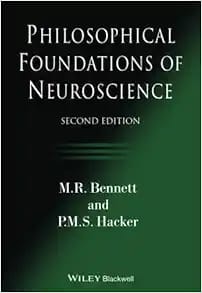Practical Reviews Opioid Prescribing Practices 2018
Target Audience
This educational activity was designed for Physicians, Nurse Practitioners, Physician Assistants, Dentists, and Oral and Maxillofacial Surgeons.
TOPICS/SPEAKER:
PART 1: Managing Opioid Therapy in High-Risk Patients
PART 2: Opioid Epidemic
$12.99
Upon completion of this activity, the participant will be able to:
Define the terms “pain” and “chronic pain.”
Provide examples of potential high-risk patients for opioid misuse based on the following 3 areas: family history, personal history/behavior, and environmental factors.
Describe how a health care provider might assess a patient’s chronic pain and measure the outcomes after initiating treatment.
Discuss the value of physical therapy and relaxation therapy in the management of chronic pain.
List at least five non-opioid drugs that may offer first-line therapy for non-cancerrelated pain management.
Summarize the Centers for Disease Control’s (CDC) guidelines that pertain to proper prescribing practice for pain medications.
Discuss the paradox of using opioids to treat patients whose chronic pain has been successfully managed with long-term opioids up to this time.
State whether the incidence of providers actually losing their license or having any legal action taken against them regarding opioid prescribing practices is large or small.
Describe Prescription Drug Monitoring Programs and discuss their use in the prescribing of opioid medications.
Discuss how the smartphone app called the Brigham and Women’s Hospital Pain App can be used as part of a patient’s chronic pain management program.
Differentiate between acute and chronic pain.
Recall from memory important statistics about the number of deaths due to drug overdose in the U.S. and how this relates to the number of people lost in 911 and the number of soldier killed in the Vietnam War.
Summarize at least 3 steps that providers can take to reduce the opioid epidemic.
List some nonopioid alternatives to managing mild pain, moderate to severe pain, and severe pain.
Discuss the impact that new federal and state regulations on opioid prescribing practices is having on prescription-related overdoses and provider prescribing practices.
Describe at least 4 topics that providers must discuss in detail with their patients before giving them a postoperative prescription for opioid pain medications.
List at least 3 common opioid-related side effects.
Differentiate between the addictive potential of Schedule I, Schedule II, Schedule III, Schedule IV, and Schedule V narcotics.
Summarize the discrepancy between addiction treatment versus other diseases as it relates to access to care.
Showing 61–72 of 1277 resultsSorted by latest
-

Neurological and Neurosurgical Emergencies First Edition
$15.99 Add to cart -

Spinal Deformities The Comprehensive Text Second Edition
$19.99 Add to cart -

Casebook of Dementia A Reference Guide for Primary Care First Edition
$9.99 Add to cart -

Movement Disorders Phenomenology An Office-Based Approach First Edition
$29.99 Add to cart -

Atlas of Sleep Medicine Third Edition
$22.99 Add to cart -

Problems of Living Perspectives from Philosophy Psychiatry and Cognitive-Affective Science First Edition
$13.99 Add to cart -

The Bloomsbury Companion to Philosophy of Psychiatry First Edition
$10.99 Add to cart -

Thinking About Medicine An Introduction to the Philosophy of Healthcare First Edition
$12.99 Add to cart -

Philosophical Foundations of Neuroscience Second Edition
$13.99 Add to cart -

Vice and Psychiatric Diagnosis First Edition
$21.99 Add to cart -

Palliative Care within Mental Health Principles and Philosophy First Edition
$7.99 Add to cart -

Madness and The Demand For Recognition A Philosophical Inquiry Into Identity and Mental Health Activism First Edition
$7.99 Add to cart





